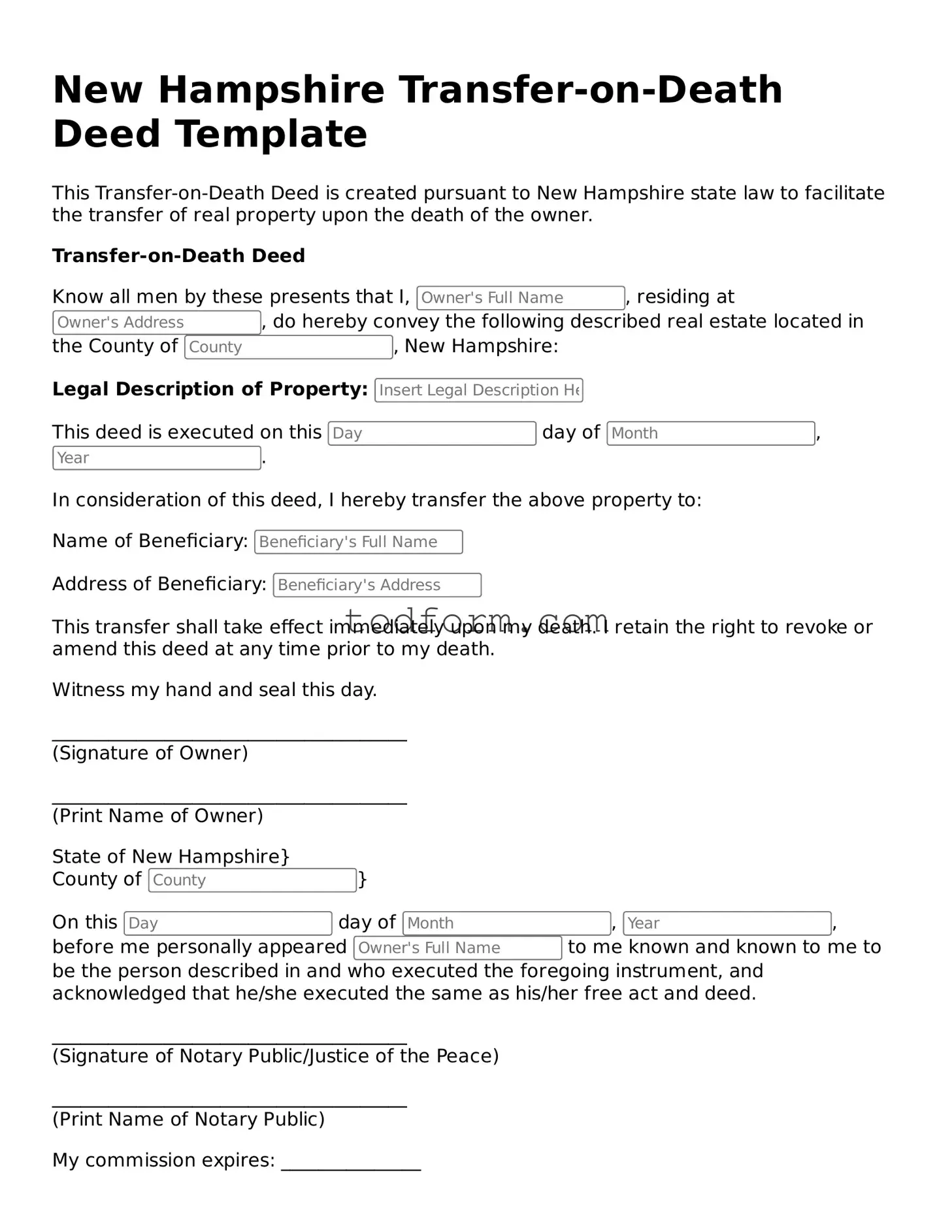The New Hampshire Transfer-on-Death Deed (TOD) form is similar to a will in that both documents allow individuals to dictate how their property will be distributed after their death. A will provides a comprehensive plan for the distribution of assets, appoints guardians for minors, and may include specific bequests. However, unlike a will, a TOD deed bypasses the probate process, allowing for a more straightforward transfer of property to beneficiaries. This can save time and money, making it an attractive option for those looking to simplify their estate planning.
Another document comparable to the TOD deed is a living trust. Like a TOD deed, a living trust allows for the direct transfer of assets to beneficiaries upon the grantor's death. However, a living trust takes effect during the grantor's lifetime, allowing them to manage and control their assets while they are alive. This can provide greater flexibility and control, especially in cases where the grantor may become incapacitated. While both documents serve to ease the transfer of property, a living trust often requires more maintenance and management than a simple TOD deed.
The joint tenancy agreement also shares similarities with the TOD deed. When two or more individuals hold property in joint tenancy, the surviving tenant automatically inherits the property upon the death of the other tenant. This feature mirrors the TOD deed's ability to transfer property directly to beneficiaries without going through probate. However, joint tenancy can complicate matters if one tenant wishes to sell their share or if there are disputes among co-owners. The TOD deed provides a clearer path for property transfer while allowing for more straightforward control over the asset during the owner's lifetime.
A beneficiary designation form is another document that aligns with the principles of a TOD deed. Commonly used for financial accounts like retirement plans and life insurance policies, a beneficiary designation allows the account holder to specify who will receive the funds upon their death. Similar to a TOD deed, this form avoids probate, facilitating a quicker transfer of assets. However, unlike a TOD deed, beneficiary designations typically apply only to specific accounts rather than real estate, making them a more limited tool for estate planning.
Another related document is the revocable living trust. Similar to the TOD deed, a revocable living trust allows individuals to transfer assets to beneficiaries without the need for probate. The trust can be altered or revoked during the grantor's lifetime, providing flexibility. However, unlike a TOD deed, which is limited to real property, a revocable living trust can hold a wider array of assets, including bank accounts and investments. This versatility makes it a popular choice for those looking to manage a more complex estate.
The quitclaim deed can also be compared to the TOD deed, as both involve the transfer of property. A quitclaim deed allows an individual to transfer their interest in a property to another person without guaranteeing that the title is clear. While a TOD deed ensures a smooth transfer upon death, a quitclaim deed is often used during the grantor's lifetime to transfer property rights quickly. It’s important to note that quitclaim deeds do not address what happens after the grantor's death, which is where the TOD deed comes into play.
Lastly, the family settlement agreement is akin to a TOD deed in that it deals with the distribution of property. This document is typically used after a person’s death to settle the estate among heirs without going through probate. While a TOD deed allows for a direct transfer of property to beneficiaries during the grantor's lifetime, a family settlement agreement is often necessary when disputes arise or when the deceased did not leave a clear plan for asset distribution. Both documents aim to simplify the transfer process, but they function in different contexts within estate planning.
